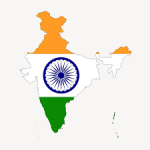Assam state of India. Located in the northeastern part of the country, it is bounded by the Kingdom of Bhutan and Arunachal Pradesh to the north, Nagaland and Manipur to the east, and Mizoram and Tripura to the south. To the west it borders Bangladesh, Meghalaya and West Bengal. The name Assam comes from the word ‘Asama’, which means ‘unparalleled’ in the Ahom language, a now-extinct language. The neighboring states of Arunachal Pradesh, Nagaland, Mizoram and Meghalaya once belonged to Assam. The capital was formerly Shillong (now the capital of Meghalaya), but was moved to Dispur on the outskirts of Guwahati in 1972.

The cultural heritage of Assam traces its origins nearly five thousand years ago, when the initial group of humans, known as the Austroasiatic people, arrived in the Brahmaputra valley. They intermingled with subsequent waves of immigrants, including the Tibeto-Burman and Indo-Aryan populations, during prehistoric times. The most recent migration involved the Tai/Shan, who played a significant role in shaping the concept of Assamese culture and identity. Subsequently, the Ahoms introduced additional Indo-Aryan groups, such as the Assamese Brahmins, Ganaks, and Assamese Kayasthas, to the region.
Paintings
Painting is a time-honored tradition in Assam, with its roots traceable to ancient practices documented by the Chinese traveler Xuanzang in the 7th century CE. His writings indicate that Bhaskaravarma, the king of Kamarupa, presented various gifts, including paintings and painted artifacts—some crafted on Assamese silk—to Harshavardhana, the king of Magadha. Numerous manuscripts from the Middle Ages showcase remarkable examples of traditional painting. Notable among these medieval works are the Hastividyarnava (A Treatise on Elephants), the Chitra Bhagawata, and the Gita Govinda. Artists of that era utilized locally sourced materials for their paintings, employing colors derived from hangool and haital. Additionally, medieval Assamese literature references chitrakars and patuas, highlighting the cultural significance of these artists. Traditional Assamese paintings have drawn inspiration from the motifs and designs found in medieval texts like the Chitra Bhagawata.
Assam is home to numerous distinguished contemporary painters. The Guwahati Art College, located in Guwahati, stands as the sole government institution offering higher education in the arts. Throughout the state, various art societies and non-governmental initiatives thrive, with the Guwahati Artists Guild emerging as a leading organization alongside the Guwahati Art College. Additionally, Assam University in Silchar, a central government institution, features a Department of Fine Arts that focuses on the art and craft of Northeast India, particularly emphasizing Assam.
Population composition
As per the Aadhar Statistics the Assam population in 2021/2022 is 34,586,234 (34.59 Millions) as compared to the last census 2011 is 31,205,576. The people who live in the plains of the Brahmaputra and Barak valleys are predominantly Indo-Iranian. By the time they arrived in the region, however, the local Aryans were mingling with Asians. was born in A significant minority of the population consisting of rural indigenous peoples outside the Indian caste system. That is why they are officially called Planned Tribes. Bodo is the largest of these groups. Most of the designated tribes live in the hilly areas of the central and southern parts of the country and are of Asian descent. Assamese, an Indo-Aryan language, is the state’s official and principal language, and a continuous record of the history of Assamese literature can be traced back to the 14th century. The Khasi speak Austro-Asiatic, but Tibeto-Burman is spoken by most of the tribes. Some groups have adopted Assamese as their mother tongue. The people of the Barak Valley south of Assam primarily speak Bengali (also known as Bangla). Bengali, like Assamese, is an Indo-Aryan language. Since the late 20th century, population growth has been unusually rapid, driven primarily by tea plantation workers, herders from Nepal, Muslims from West Bengal, and refugees from Bangladesh immigrating to Assam. The state’s urban population growth reflects not only industrial growth and expanding commercial activity, but also the tendency of many immigrants, especially those from Bangladesh, to live closer to cities. In the early 21st century, Guwahati had the most significant urban population.
Biodiversity
Biodiversity encompasses the diverse array of life forms across all levels of biological organization, from genes and species to higher taxonomic categories, as well as the variety of ecosystems and habitats and the processes that occur within them. It is essential for meeting human needs, as regions rich in biodiversity provide numerous options and opportunities for enhancing human well-being and adapting to environmental changes. India ranks among the 17 mega-biodiverse countries globally, contributing 7-8% of the world’s recorded species. Assam, located within the Eastern Himalayan Biodiversity Region, is one of the two biodiversity hotspots in the nation. The state’s unique climatic conditions and varied physical landscapes have led to a rich array of ecological habitats, including forests, grasslands, and wetlands, which support a wide range of plant and animal species.
The Biological Spectrum
The climatic conditions in this region lead to a predominance of warm and highly humid weather, which, combined with its diverse physiography, fosters the lush growth of various plant communities. This unique environment gives Assam a distinct phyto-geographical identity, with numerous species endemic to the area. Additionally, it serves as a center of origin for several commercially significant plants, such as banana, citrus, mango, zizyphus, and tea. The remarkable diversity of flora has led many scholars to refer to Assam as the “Biological Gateway” of Northeast India. Notably, the distinguished plant taxonomist and geographer Armen L. Takhtajan remarked that the “cradle of flowering plants lies between Assam and Fiji.”





